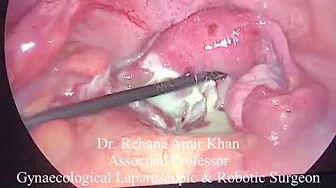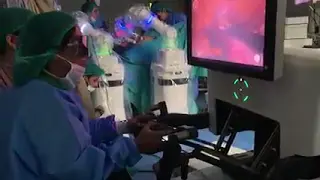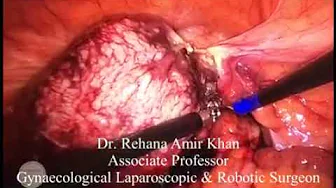Operative Hysteroscopy

OPERATIVE HYSTEROSCOPY
Consult the Best Gynecological Laparoscopic Surgeon in Lahore.
With years of experience in Gynecology, we are here to help
Our Specialist Gynecological Laparoscopic surgeons are specialized in all kinds of:
Operative Hysteroscopy
Operative Hysteroscopic surgery is a minimally invasive procedure used to treat uterine disease without open surgery. With a hysteroscope, the uterus is accessed through the vagina and cervix without making an incision in the abdominal wall.
However, when needs our physicians to use Operative hysteroscopic for minimally invasive procedures to treat cases and reproductive physicians.
Need of Operative hysteroscopy
If you have uterine or reproductive problems that require treatment, you may need hysteroscopic surgery. Some health conditions treated with Operative hysteroscopic surgery include:
In some cases, an obstetrician and a gynecologist may perform both diagnostic and surgical hysteroscopy. Diagnostic evaluation and treatment can be performed during the same appointment using the advanced technology available at our hospital.
OPERATIVE HYSTEROSCOPY
Is hysteroscopy practical?
The term "Operative" may sound intimidating when it comes to hysteroscopy, but it's less invasive than traditional open surgery. There is no incision in the abdominal wall, although incisions or surgical techniques can be used to correct uterine disease. In most cases, Operative hysteroscopic surgery is an outpatient procedure that can be performed in an office and does not require general anesthesia.
Preparing for a Operative hysteroscopy
A hysteroscopy is usually done shortly after your period or when there is no bleeding.
Vaginal treatments, including internal cleaning procedures such as tampons, medications, or douching, should not be used 24 hours before surgery.
If anesthesia is used during the procedure, it is best to have someone drive you to your appointment and drive you home. Our health professional will give you additional instructions on how to prepare for your appointment.
You don't have to worry about anything as the operative hysteroscope just takes 5 to 30 min and patients can go home after a short stay at the hospital.
Some confuse operative hysteroscopy with diagnostic hysteroscopy but both are different from each other.
Verily, operative hysteroscopy is used to correct abnormalities found during diagnostic hysteroscopy. These abnormalities are usually detected during diagnostic hysteroscopy. Where operative hysteroscopy can be performed concurrently to avoid a second surgery.
Outcomes of Operative Hysteroscopy
Operative hysteroscopy uses a hysteroscope to explore and treat uterine disease. A hysteroscope is passed through the vaginal canal and cervix into the uterus, giving your doctor access to the affected area. You may receive a local or general anesthetic to relieve any discomfort.
First, a speculum is inserted into the vaginal canal to view the cervix and widen it to allow access to the hysteroscope. Your doctor will use a hysteroscope to deliver gas or fluid into the cavity to expand the uterus for a better view during the procedure. If there is the tissue that needs to be treated or removed, minor surgery is performed using small instruments, using the images from the hysteroscope to guide your doctor.
In most cases, surgical hysteroscopy can be performed in an hour or less. After surgery, your obstetrician will guide you through post-operative care.
OPERATIVE HYSTEROSCOPY
Risks and Complications
Complications of operative hysteroscopy can be classified as early complications, including
or late complications and suboptimal outcomes, such as,
With years of experience as a Gynecological Laparoscopic Surgeon in Lahore, Prof. Dr Rehana Aamer Khan has successfully treated thousands of patients who are now enjoying their lives with their loved ones.




